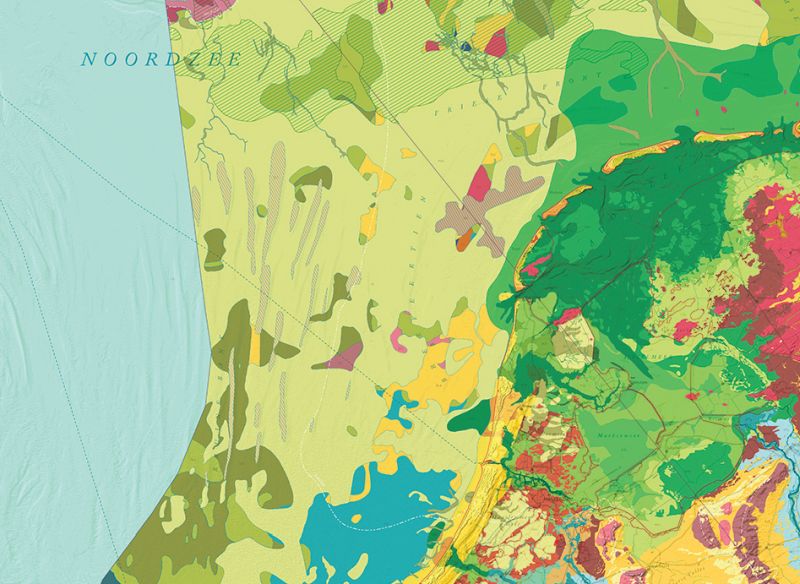S. van Heteren1*, J. Schokker1, M.J. van der Meulen1, A.L. Kaliar1, J.M.M. Hettelaar1, R.N. Reindersma1
N.N. Trabucho Alexandre1
1 TNO - Geological Survey of the Netherlands, * This email address is being protected from spambots. You need JavaScript enabled to view it.
Geological mapping
Systematic government-commissioned mapping of the Dutch subsurface dates back to 1918, when the Geological Survey of the Netherlands was founded by Cornelis Lely. Each geological survey in the world has a similar task: offering insight into the distribution of geological resources and the presence of geological risks. After one hundred years, our national mapping program is alive and kicking, although we now focus on 3D subsurface modeling rather than on 2D mapping. Our models provide new geological explanations and predictions for an ever-increasing application portfolio. Nevertheless, a traditional map (Figure 1) still has value. It tells an exciting and compelling story of change spanning millions of years, showing how sea, rivers, wind, ice sheets, vegetation and man have shaped our part of northwestern Europe.
An illustrated story of the North Sea subsurface
Soft young layers in the North Sea cover much firmer formations – highly suitable for pile foundation in construction – dating back to the ice ages. Because of glacial overburdening, some of these Pleistocene units are so dense that pile design requires extra care. A landward-shifting coastline driven by Holocene sea-level rise explains why we find coarse river sediment close to the seabed offshore Rotterdam, a potential source of sand and gravel for concrete and masonry. A vast network of drowned tidal channels in the north contributes to lateral subsurface heterogeneity. Closure of former inlets dissecting an originally open coast has left clayey channel fills that should be avoided where wind farms are planned, especially close to the present coastline. Buried soils and peat layers mark drowned Stone Age landscapes that represent and are home to valuable cultural heritage. And finally, ‘unlimited’ offshore sand resources for shoreface and beach nourishment are in fact regionally finite when composition and non-extractible covers are taken into account. Managing and fixing our delta and its coastline, needed for socio-economic reasons, is a work of the ages that requires all geological knowledge available.

Figure 1 Fragment of the new geological map.










